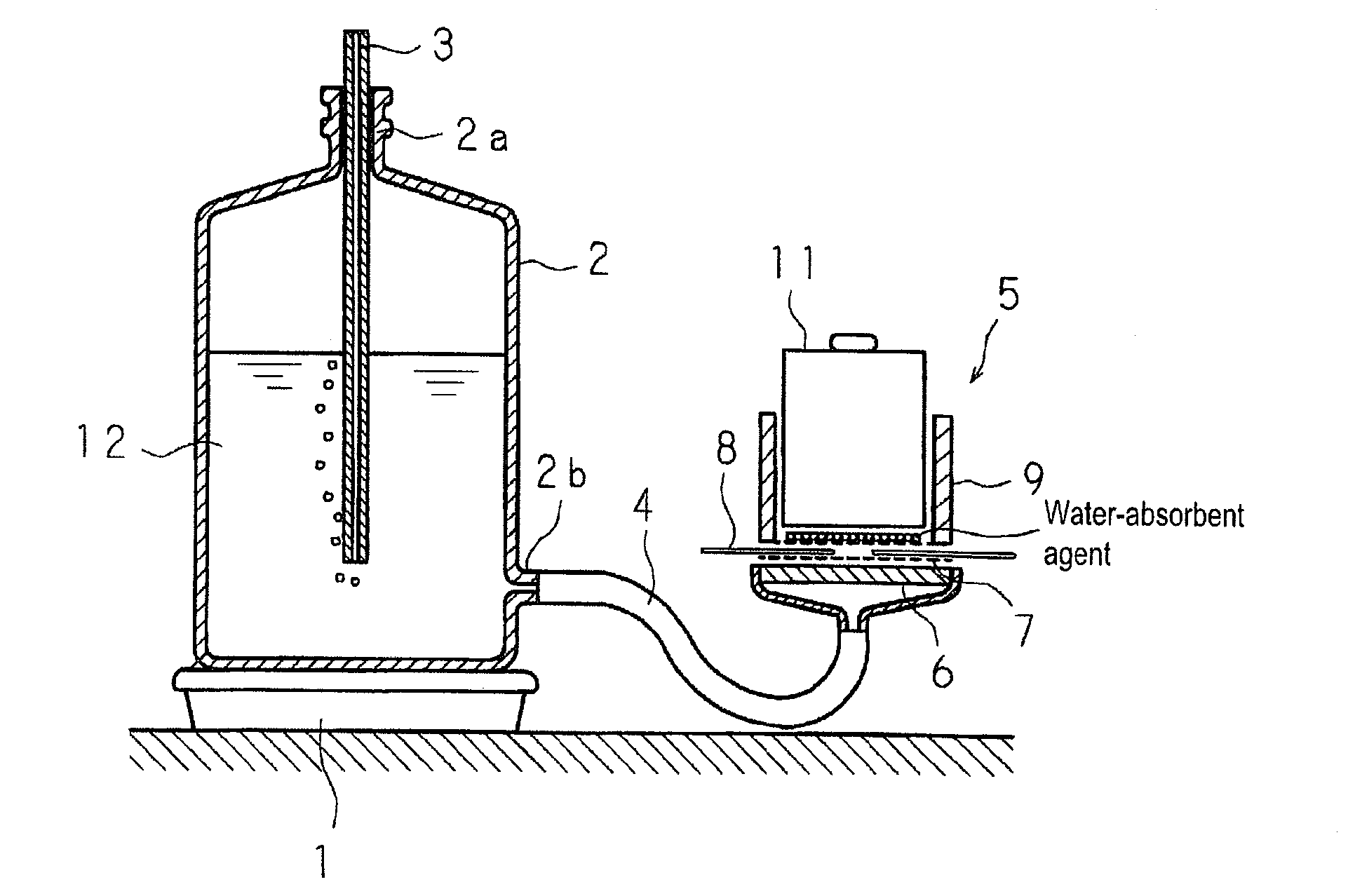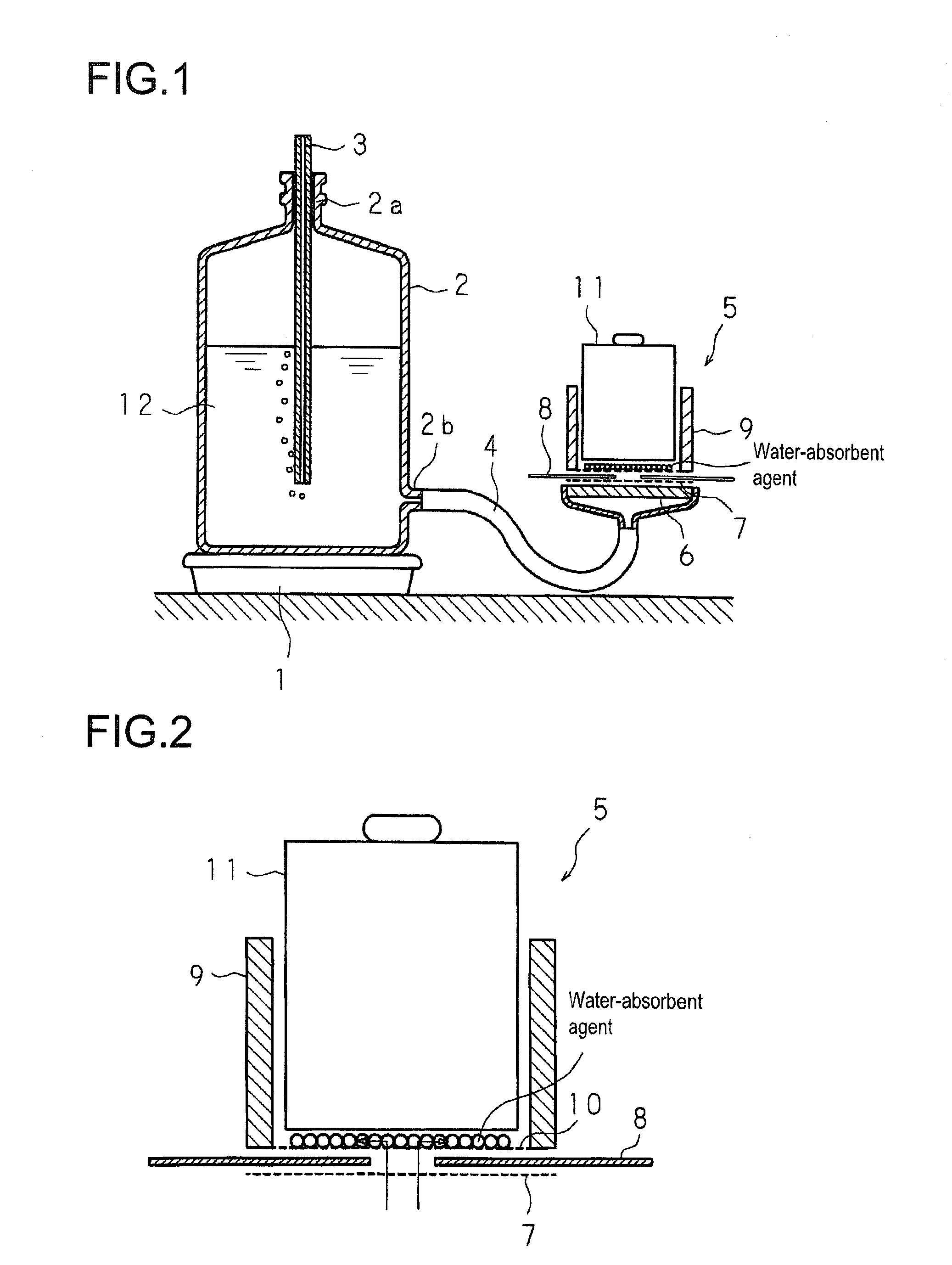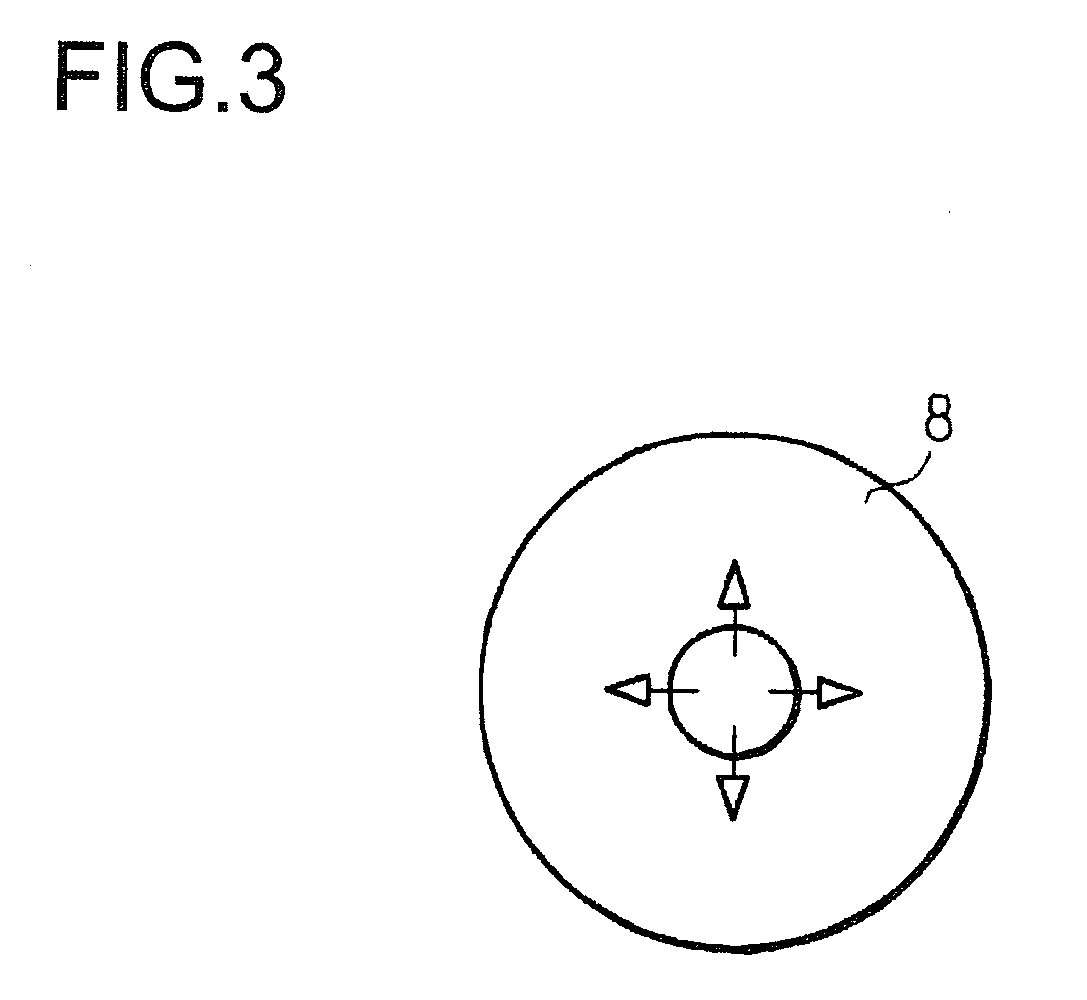Particular water-absorbent agent having water-absorbent resin as main component
a water-absorbent resin and particulate technology, applied in the direction of bandages, transportation and packaging, other chemical processes, etc., can solve the problems of large amount of water-absorbent resin disposal, increase in cost and productivity, and improvement means that cannot provide satisfactory properties of disposable diapers for practical use, etc., to achieve enhanced absorption capacity, low cost, and easy disposal after use
- Summary
- Abstract
- Description
- Claims
- Application Information
AI Technical Summary
Benefits of technology
Problems solved by technology
Method used
Image
Examples
example 1
[0162]Into 5,500 g of 33% by mass aqueous solution of sodium acrylate with a neutralization ratio of 75% by mole, 3.92 g of polyethylene glycol diacrylate (an average addition mole number of ethylene oxide of 8), as an internal cross-linking agent, was dissolved to prepare a reaction solution. Then this reaction solution was subjected to de-airing under nitrogen gas atmosphere for 30 minutes. Then, into a reactor formed by attachment of a cover onto a 10-L (inner volume) stainless double arm-type kneader, equipped with a jacket and two sigma-type blades, the above reaction solution was supplied, and the system was subjected to purging with nitrogen gas while maintaining the reaction solution at 25° C.
[0163]Subsequently, under stirring the reaction solution, 2.4 g of sodium persulfate as a polymerization initiator, and 0.012 g of L-ascorbic acid were added, resulting in initiation of polymerization after about 1 minute. Then, polymerization was carried out at from 25 to 95° C., and t...
example 2
[0167]Into 5,500 g of 33% by mass aqueous solution of sodium acrylate with a neutralization ratio of 75% by mole, 3.43 g of polyethylene glycol diacrylate (an average addition mole number of ethylene oxide of 8), as an internal cross-linking agent, was dissolved to prepare a reaction solution. Then this reaction solution was subjected to de-airing under nitrogen gas atmosphere for 30 minutes. Then into a reactor formed by attachment of a cover onto a 10-L (inner volume) stainless double arm-type kneader, equipped with a jacket and two sigma-type blades, the reaction solution was supplied, and the system was subjected to purging with nitrogen gas while maintaining the reaction solution at 25° C.
[0168]Subsequently, under stirring of the reaction solution, 2.4 g of sodium persulfate and 0.012 g of L-ascorbic acid, as polymerization initiators, were added, resulting in initiation of polymerization after about 1 minute. Then, polymerization was carried out at from 25 to 95° C., and the r...
example 3
[0172]Into a 2-L four-necked separable flask equipped with a stirrer, a reflux condenser, a thermometer, a nitrogen gas introduction tube and a dropping funnel, 1.0 L of cyclohexane was charged, and 3.8 g of sucrose fatty acid ester (DK-ester F-50, HLB=6, manufactured by Daiichi Kogyo Yakuhin Co., Ltd.), as a dispersing agent, was added and dissolved, and then dissolved oxygen was purged by blowing into nitrogen gas. Separately, into a flask, 84.6 g of sodium acrylate, which is a neutralized substance of acrylic acid, 21.6 g of acrylic acid, and 0.016 g of N,N′-methylenebisacrylamide were dissolved into 197 g of ion-exchanged water, and still more 0.4 g of hydroxyethyl cellulose (HEC-Daicel EP-850, manufactured by Daicel Chemical Industry Co., Ltd.) was dissolved to prepare an aqueous solution of a monomer, with a monomer concentration of 35% by mass. Into this aqueous solution of a monomer, 0.15 g of potassium persulfate was added and dissolved, and then oxygen dissolved in the aqu...
PUM
| Property | Measurement | Unit |
|---|---|---|
| particle diameter | aaaaa | aaaaa |
| particle diameter | aaaaa | aaaaa |
| mass average particle diameter | aaaaa | aaaaa |
Abstract
Description
Claims
Application Information
 Login to View More
Login to View More - R&D
- Intellectual Property
- Life Sciences
- Materials
- Tech Scout
- Unparalleled Data Quality
- Higher Quality Content
- 60% Fewer Hallucinations
Browse by: Latest US Patents, China's latest patents, Technical Efficacy Thesaurus, Application Domain, Technology Topic, Popular Technical Reports.
© 2025 PatSnap. All rights reserved.Legal|Privacy policy|Modern Slavery Act Transparency Statement|Sitemap|About US| Contact US: help@patsnap.com



